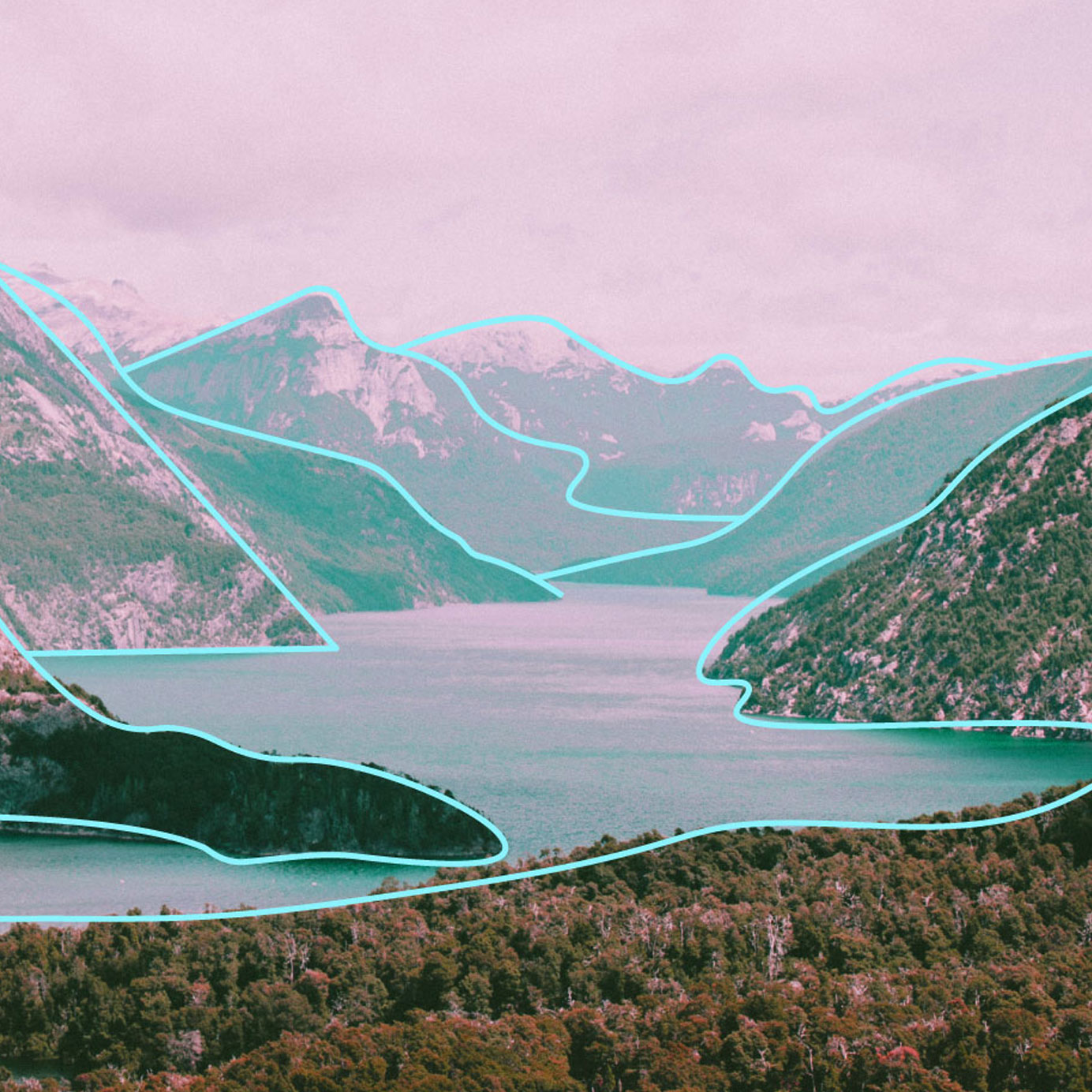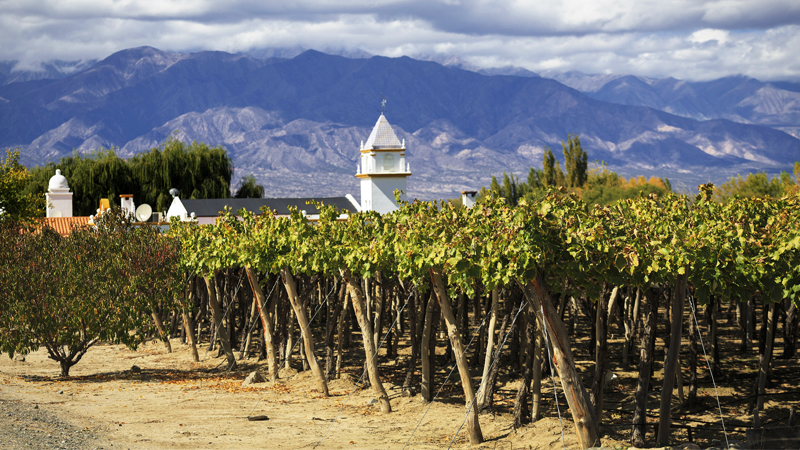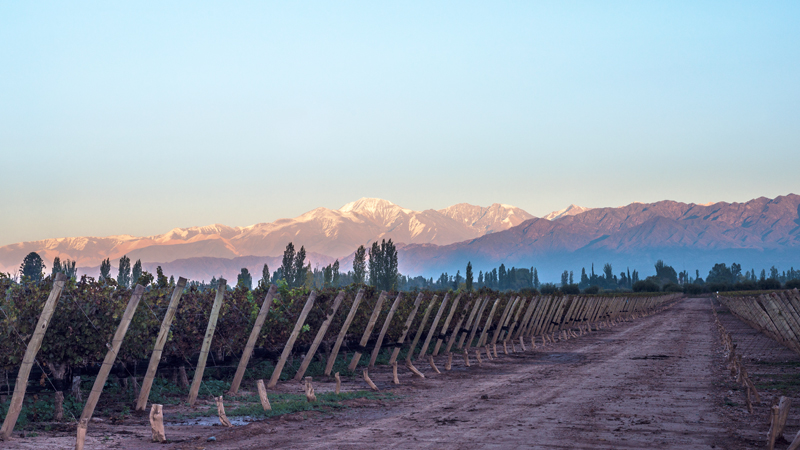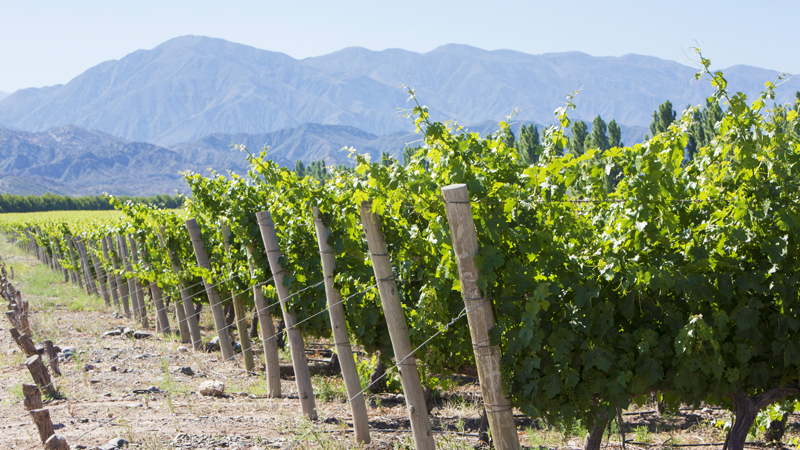Mendoza and Malbec are two entirely different entities that, at times, feel like interchangeable synonyms. Granted, one is a red wine, and the other is the name of the region in which it’s famously produced; but each can be used as a single-word summary for one of the greatest oenological success stories of the past 25 years.
Between 2000 and 2012, Argentine wine exports experienced an 800 percent increase in value, from around $100 million to over $900 million. During this time, Malbec accounted for over half of all varietal exports. For global drinkers, the native French grape is now indelibly linked to the heavy-throttled wines exported from Mendoza, and Argentina itself.
Of course, Argentina is more than Mendoza. And Argentine wine is more than Malbec. Covering more than 1 million square miles, Argentina is four times the size of France. The country has some 500,000 acres of planted vines, spread across four distinct winemaking regions.
There’s the Northern region, which is defined by high-altitude winemaking. Farther south is Cuyo, the beating heart of the nation’s wine industry. Farther south still lie the arid deserts of Patagonia, and finally, in the west, is the emerging Atlantic region.
Argentina’s wine industry continues to thrive because of Malbec’s mass appeal. But it is also being elevated by a younger generation of winemakers keen to create Argentine wine culture beyond heavy-hitting Malbecs. In keeping with global trends, they hope to pursue lighter wines — and change the way the rest of the world views Argentine wine in the process.
Their efforts come at a complicated time in Argentina’s economic history. In contrast to the roaring success of the Argentine wine industry, the national economy has suffered from periods of boom and bust and decades of intermittent financial instability.
To entice tourists and provide a timely shot in the arm to the economy, last year the Argentine government announced tax incentives for visiting foreigners. Additionally, this June, the Argentine Peso reached an all-time low against the American dollar.
If you’re looking to do some good with your tourism dollars and want to discover a wine destination beyond its most-exported bottles, explore the vast expanses of Argentina outside Mendoza — and Malbec. Here is everything you need to know.
Salta
With plantings reaching up to 10,000 feet above sea level, the northwestern province of Salta is home to some of the world’s highest-altitude vineyards. Production is centered around the aromatic, native white grape Torrontés, as well as Malbec and Syrah.
Given the region’s proximity to the equator, and daytime temperatures that regularly exceed 100 degrees, Salta’s high elevation not only provides a stunning backdrop but is the defining factor that enables winemaking in the region. Huge drops in nighttime temperatures help winemakers retain all-important acidity and produce some of the country’s most interesting wines, including the widely regarded Bodega Colomé Estate Malbec.
Unless you enjoy lengthy coach travel (durations from Buenos Aires drift into double-digit hours), the best way to reach Salta is via domestic flight from the capital’s Jorge Newbery Airport. In fact, air travel from Buenos Aires is the best way to reach all the regions listed in this feature, such is the vastness of the country.
Once you reach the city of Salta, you’ll need to travel 120 miles farther south to Cafayate, the center of the province’s wine production.
For a relatively small town, there’s a surprising number of restaurants, bars, and hotels. With numerous bodegas to visit, including the highly recommended Bodega El Esteco and Bodega Etchart, it’s a paradise for hardcore wine tourists. There are also wine hotels, such as the spectacular colonial-style Patios de Cafayate, plus a vine and wine museum, and even a wine and golf resort.
Those who want to leave the beaten path completely should visit Bodega Colomé — though advanced planning is essential. Situated more than 100 miles from both Salta and Cafayate, the winery is closest to the town of Molinos, which has only a handful of hotels.
It’s worth the effort. Regularly described as a refuge and an oasis, Colomé has a restaurant, guided tours, wine tastings, and even a museum of “art, light, and space.” The views on the drive and from the winery itself are some of the most spectacular in the country.
Patagonia
While most associate Patagonia with skyscraping glaciers, exotic wildlife, and Francis Mallmann, the boundless southern region is also home to a collection of some of the best high-end wineries in the country.
Patagonia covers an area of over 400,000 square miles, though nearly all of its wine production takes place in the north of the region, in the provinces of Río Negro and Neuquén.
Arid conditions mean that grape growing was initially only made possible after construction of a series of canals built by British settlers in the 1800s. It is the coolest wine region in Argentina and is at lower altitudes than Mendoza, San Juan, and Salta. This provides a longer, slower period of grape-ripening, allowing cooler-climate varieties to thrive.
In recent years, the region has emerged as quality producer of high-end Pinot Noir, with artisan biodynamic bodegas like Chacra taking full advantage of old vines planted, and later abandoned, by Italian settlers over 80 years ago.
Visitors to the region should choose the city of Neuquén as a base camp. The city is home to a regional airport and equidistant to many tourist-friendly bodegas in both Río Negro and Neuquén provinces.
North of the city are a number of interesting bodegas, including the Schroeder Family Winery. In 2003, while digging the foundations for the winery, workers unearthed the fossil remains of a Giganotosaurus. The dinosaur has become the winery’s trademark, and visitors can see the remains for themselves during one of the bodega’s guided tours.
Other nearby wineries to visit include Bodega del Fin del Mundo and Bodega Malma. The latter offers English-language guided tours, tastings, and has its own gourmet restaurant. To the west of Neuquén city, just outside the town of General Roca, is Humberto Canale, the pioneering, oldest winery in Patagonia.
San Juan
After Mendoza, San Juan is the country’s second-largest wine producer by volume. Though production was previously focused on providing grapes for low-quality table wine, the region is becoming increasingly known for its high-quality Syrah production, particularly in the Pedernal Valley subregion.
In total, there are five valleys in the region where vine growing takes place: Tulum, Ullum, Zonda, Pedernal, and Calingasta. Each has its own unique set of environmental and climatic conditions that make them apt for quality wine production.
The city of San Juan is the country’s 10th most populated and is the capital of the winemaking province by the same name. Admittedly, the sleepy provincial-style town has less going on than Argentina’s other tourist regions but presents an ideal one- or two-day getaway for those visiting the country on an extended vacation.
Founded in 1827, Bodega Graffigna is the region’s oldest winery. Located a stone’s throw from the city center, the winery offers a convenient eno-touristic experience, with tours beginning in the winery’s historic museum and ending in a wine bar where visitors can sample the bodega’s range of wines. Best of all, there’s no need to drive home afterward!
Leave the city and there are a number of bodegas to visit within a 30 minute drive, including Callia which is owned and run by the same group in charge of Mendoza’s internationally famous Salentein winery. There’s also family-run boutique winery Bodega y Finca Sierras Azules, as well as Bodega Merced del Estero, which remains highly popular with domestic tourists.



